in vitro node culture
Preparing the nodes
The advantage of this technique is that the new plants are clones of their parents and look like they do. We have used this technique to propagate: Phalaenopsis, Doritis pulcherima, Phaius tankervilleae and Chiloschista lunifera. Suitable are nodes, which you cut diagonal with 1cm below and above of the eye on the flower stalk. It is very important to us a very sharp knife because otherwise the tissue will be hurt to much.
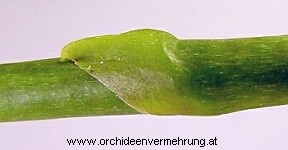
Next you have to remove the bract covering the node carefully.
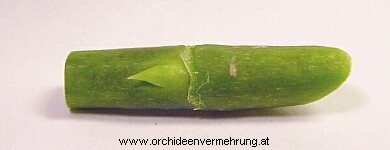
Which media should you use?
To initiate the growth of the "sleeping eye" we have to use media which includes cytocinins (phytohormon). We use Sigma´s P6793 (Phytotechlab P793).
Preparing the flasking area
You can use the same equipment we discribed under Seed sowing.
Flasking the nodes
Dip the trimed nodes for a few seconds in 70% ethanol. After that put the nodes for 30 minutes in 0,5% hydrogen peroxide (H2O2). Next put them for 15 minutes in 3% H2O2. When the 15 minutes elapsed, place the sterilized nodes (in the test tube) on the grill which is lying in the steam (sterile area). Now, pick up a flask and open it in the steam. The cap should be placed on the ethanol soaked kitchen paper. Take your forceps and pass the flame of your candle to sterilize it. Transfer the forceps to the sterile area (steam) and catch one node which is swimming in the hydrogen peroxide solution and stick it with the end at the bottom of the node into the media.
Next, dip the forceps into the boilding water to remove all rests of media and transfer the forceps into the bottle with 70% ethanol. Close the flask (in the steam) and placed it somewhere on you desk for labeling. With the next flask you can process in the same way.
Hint: To make your sterilization solution more effective, add a drop of dish washing solution to your hydrogen peroxide.
Further care
The place where you culture your nodes should be bright and warm (about 20 °C). Prevent direct sun because it will become to hot inside the flasks if they are standing
in direct sun.
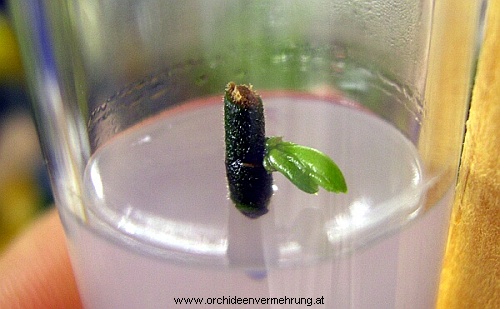
Because of the size and the structure of the nodes the contamination rate is higher than using asymb. seed germination. So, it´s very important to check them in the first week every day if there are any contaminations. If you find some fungi or bacteria you can try to sterilize them once again.
Many nodes exudate phenolic compounds into media which make the media black. This phenolic exudations will kill your nodes if you don´t replate them to new media. Many nodes stop exudating phenolic compounds after 3 or 4 replatings.
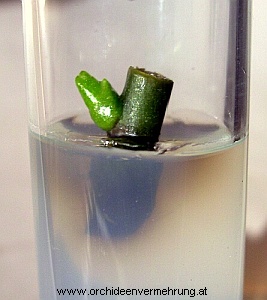
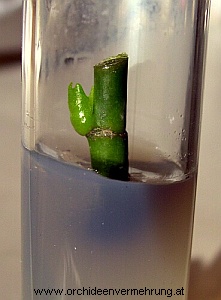
As soon as the node has got 2 or 3 leaves you should replate it to media without hormones (e.g. Sigma P6668) to initiate root development.
What can I do if I want more than one plant?
If you want to produce more than one clone you should cut the top 1/3 of the node. This will cause the node to put out up to a about dozen shoots instead of one.
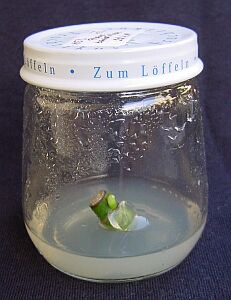
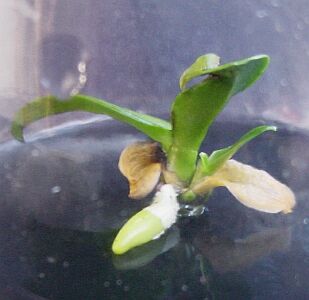
We use glass jars with a volume of about 350ml for replating. They are sealed with cling film. More information can be found in our article "closing in vitro flasks with cling film".
Author: Thomas Ederer
